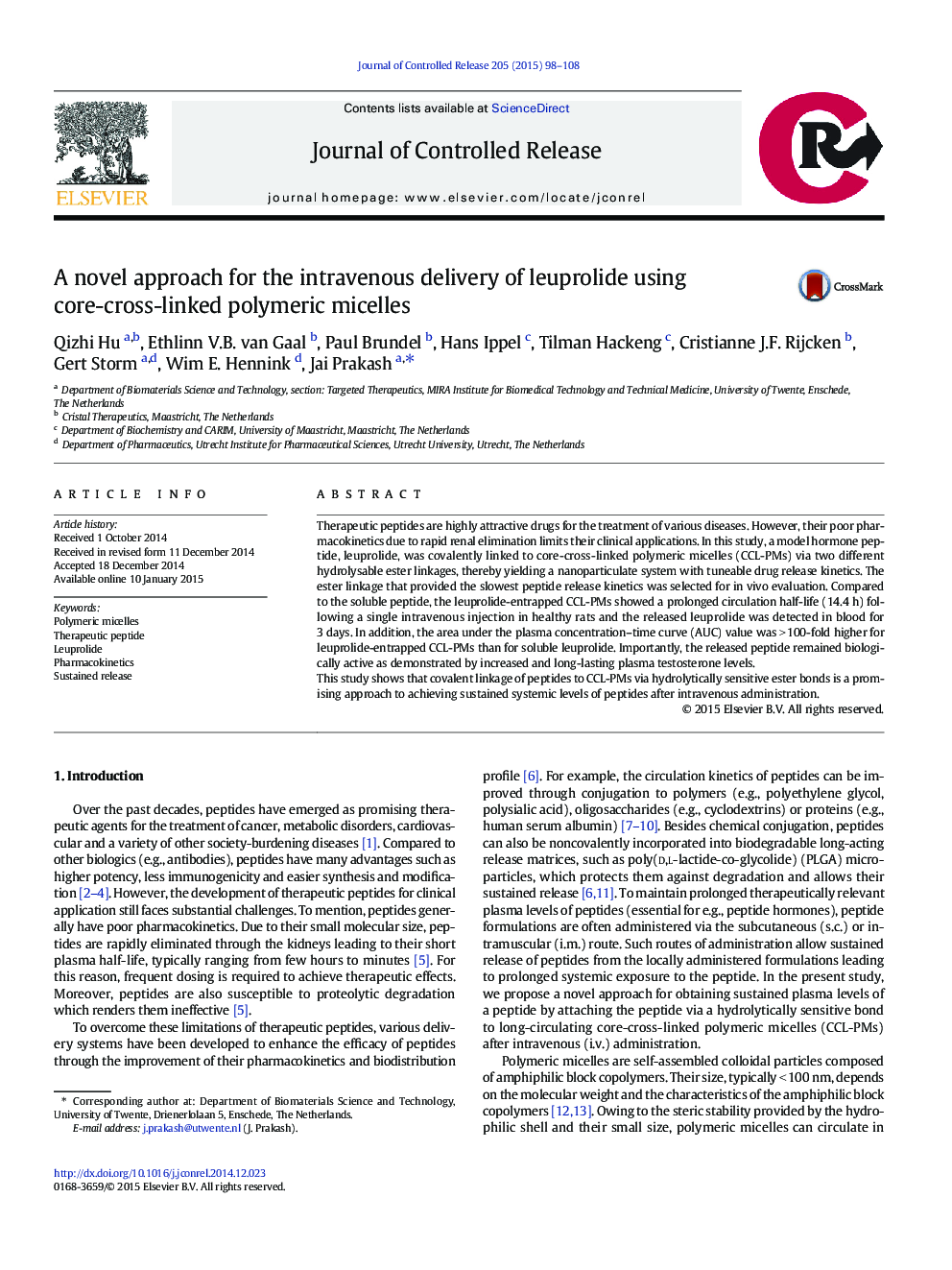| Article ID | Journal | Published Year | Pages | File Type |
|---|---|---|---|---|
| 1423762 | Journal of Controlled Release | 2015 | 11 Pages |
Therapeutic peptides are highly attractive drugs for the treatment of various diseases. However, their poor pharmacokinetics due to rapid renal elimination limits their clinical applications. In this study, a model hormone peptide, leuprolide, was covalently linked to core-cross-linked polymeric micelles (CCL-PMs) via two different hydrolysable ester linkages, thereby yielding a nanoparticulate system with tuneable drug release kinetics. The ester linkage that provided the slowest peptide release kinetics was selected for in vivo evaluation. Compared to the soluble peptide, the leuprolide-entrapped CCL-PMs showed a prolonged circulation half-life (14.4 h) following a single intravenous injection in healthy rats and the released leuprolide was detected in blood for 3 days. In addition, the area under the plasma concentration–time curve (AUC) value was > 100-fold higher for leuprolide-entrapped CCL-PMs than for soluble leuprolide. Importantly, the released peptide remained biologically active as demonstrated by increased and long-lasting plasma testosterone levels.This study shows that covalent linkage of peptides to CCL-PMs via hydrolytically sensitive ester bonds is a promising approach to achieving sustained systemic levels of peptides after intravenous administration.
Graphical abstractFigure optionsDownload full-size imageDownload high-quality image (83 K)Download as PowerPoint slide
